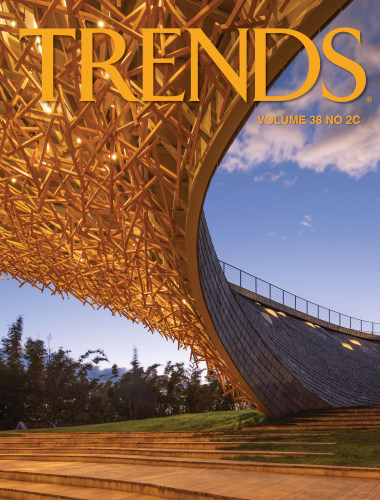Seismic epiphany
Turns out, the world is not the original 'paradise' intended and this wild installation by LOLA Landscape Architects breaks new conceptual ground on the subject
Art installation by LOLA Landscape Architects
Kunsthal KAdE presents the exhibition 'Schurend Paradijs' (or Abrasive Paradise), in which twelve contemporary artists are invited to reflect on the utopian ideal of a makeable world, within a world that turns out to be anything but makeable.
Perhaps the most dramatic of them all is 'Eruption'.
Artistic precedent and background to the exhibition
In 2022 it will be 150 years ago that Piet Mondrian was born in Amersfoort.
The exhibition 'Schurend Paradise' starts from the famous artist’s search for an 'Earthly Paradise': a modernist dream of a makeable world based on form and style, in which people strive from freedom for the true, good and beautiful .
Mondrian more or less managed to realise his paradise, in his art and his studios – however, in his personal search for his ideal, Mondrian left the natural behind and replaced it with constructed order.
Cut to today, where in contemporary art generally the ideal of a constructible world seems to have faded into the background.
Instead, there is reflection on the world and society – and 100 years after Mondrian 's dream, our world seems anything but a paradise.
Anything but a paradise
Climate change, environmental pollution, viruses and mutual tension are tangible threats in the world we inhabit today.
So, instead of proposing a utopia to strive for, contemporary artists try to analyse the current state of being – the state of our 'paradise' today – and point the viewer to the reality in which we live by means of an experience.
In the context of this, the twelve invited contemporary artists have filled a space with their view on today's chaotic world.
The 'paradise ' in Kunsthal KAdE starts in the main hall, which is filled with a street garden designed by LOLA Landscape Architects that literally bursts out of the pavement tiles.
With this garden, the design agency explores the way in which nature, as an unstoppable force, recaptures the city.
Eruption!
‘Eruption’ is a floor-filling street garden that bursts out of the pavement.
The presentation is completed with a selection of works by artists, such as Michael Raedecker, Armando and Sanam Khatibi, that each visualises a paradoxical paradise.
The paradise is an idealised landscape, a projection of desires, and provides in abundance what the everyday landscape lacks.
While this was originally food, water and security, a new shortage has arisen in Western urban societies: contact with nature.
For a long time, the resulting longing for nature was a reason to travel far, but this is slowly making way for a local and collective alternative.
What it symbolises
Eruption sees the city being broken open and facade, roof and food gardens are emerging everywhere.
Plus, our security is also threatened in a new and more fundamental way – by the climate.
Embankment, afforestation and rewilding are important in the fight against global warming and with Eruption, the new paradise lies beneath the pavement – nature bursts out of an urban floor.
In this eruption of primeval nature, ferns and tree ferns grow – plants that were already present in the Netherlands 300 million years ago and whose remains form the basis for today's fossil fuels.
They take CO2 from the atmosphere and cool the earth with it.
Credit list
Project
Design agency/concept
Home kitchen bathroom commercial design
Personality plus
Diving into nature
Classic looks, contemporary efficiency







